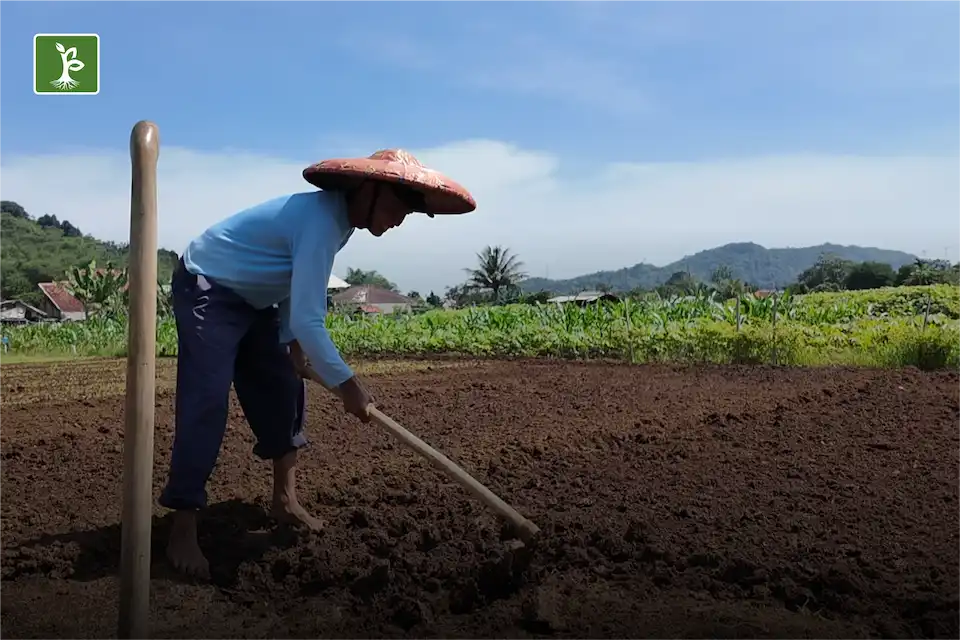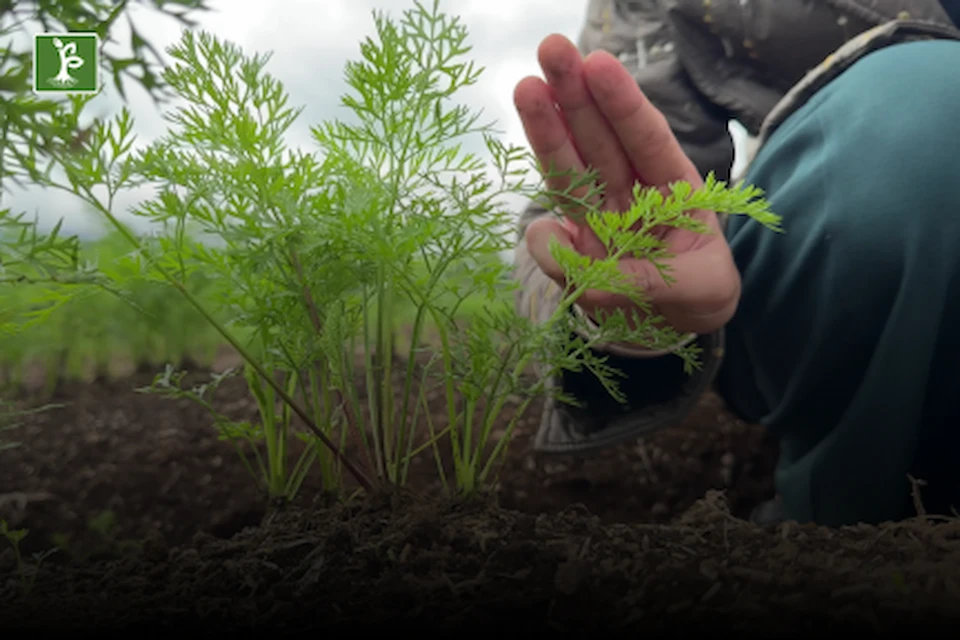Carrot (Daucus carota) is an annual plant that thrives in highland areas at an altitude of 700–1500 meters above sea level. It grows optimally in environments with air temperatures ranging from 16°C to 25°C, humidity levels of 80–90%, annual rainfall of 1,500–2,800 mm, and soil pH between 6 and 6.8. The harvesting period for carrots is relatively short, approximately 3–4 months after planting.
With proper care, carrot productivity can reach 10–15 tons per hectare or 1–1.5 kg per square meter. Ideally, carrots should be cultivated in open fields, as this allows them to receive adequate space for growth, optimal sunlight exposure, and good air circulation.
1. Selecting the Right Variety
The first step in carrot cultivation is choosing a variety that suits the environmental conditions and market demand. The right variety selection supports optimal plant growth and ensures the harvest meets consumer preferences.
Some popular carrot varieties in Indonesia include Imperator, Nantes, and Berastagi. Each variety has its own advantages in terms of shape, taste, and adaptability to specific environmental conditions.
2. Land Preparation

Carrots grow best in fertile, well-drained sandy soil rich in organic matter. Proper land preparation is essential for maximizing growth and yield. Here are the steps for preparing land for carrot planting:
- Choose a location with loose soil that receives ample sunlight. Avoid rocky soil to ensure the roots grow straight and unhindered.
- Remove weeds and plant residues to prevent competition for nutrients.
- Loosen the soil using a hoe or tractor to a depth of 30–40 cm, then let it aerate for a week.
- Create raised beds with a width of 120 cm, a height of 20–30 cm, and a spacing of 30 cm between beds.
- If the soil pH is below 6, apply dolomite lime at a rate of 1.5 tons per hectare (150 grams per square meter) 2–4 weeks before planting.
3. Base Fertilization
To enhance soil fertility, apply organic fertilizer before planting. Use base fertilizers such as cow or chicken manure at a rate of 10–15 tons per hectare (1–1.5 kg per square meter), spreading it evenly over the raised beds.
4. Seed Preparation and Treatment

Carrot seeds should be selected from high-quality, disease-free varieties. The seeds must be intact and free from defects. To accelerate germination, soak the seeds in warm water for 12–24 hours.
Soaking the seeds in warm water helps break dormancy, making it easier for them to germinate in the soil.
5. Planting
Before sowing, water the raised beds to ensure optimal soil moisture. Then, evenly spread the seeds across the bed surface.
Seed sowing should be done in the morning or late afternoon to avoid excessive heat. After sowing, cover the seeds with a thin layer of soil to protect them and support germination.
6. Regular Watering

Carrots require stable soil moisture for optimal root development. Watering should be done twice a day, in the morning and evening, especially during the early growth stage.
Ensure even watering, but avoid waterlogging, as it can lead to root rot.
7. Thinning

Thinning should be done evenly, maintaining a plant spacing of 5–10 cm (approximately three fingers apart). This process is carried out when the plants are around 60 days old.
Keep only healthy plants; if any show signs of pest or disease attacks, remove and destroy them immediately.
8. Weeding
The next step is weeding, which involves removing weeds and unhealthy plants. Weeding is done three times:
- First weeding at 30 days after planting (DAP) using hands
- Second weeding at 60 DAP using a small fork
- Third weeding at 75 DAP using hands, while also removing yellowing and damaged leaves.
9. Supplemental Fertilization
Supplemental fertilization is essential to ensure the plant’s nutrient needs are met throughout the growth period. Apply fertilizers evenly between the carrot plants at 30 DAP and 60 DAP (after the first and second weeding). Use 100 kg per hectare of urea and 100 kg per hectare of SP36.
10. Pest and Disease Control
Carrots are vulnerable to various pests and diseases that can hinder growth and reduce yield quality. Common pests affecting carrots include aphids (Aphis sp.) and cutworms (Agrotis ipsilon Hufn.).
Meanwhile, common diseases affecting carrots include leaf blight and root rot, caused by the fungi Alternaria dauci Khun and Rhizoctonia solani. Regular monitoring of pests and diseases is necessary to take immediate control measures.
11. Carrot Harvesting

Carrots can be harvested when they reach 100–120 days after planting. Signs that carrots are ready for harvest include yellowing leaves and the root shoulders appearing above the soil surface.
Before harvesting, loosen the soil using a garden fork to make pulling the carrots easier. Carefully pull the carrots to keep them intact and prevent breakage. Gather the harvested carrots on the raised beds and store them in plastic sacks to maintain quality during distribution.
12. Post-Harvest Handling
After harvesting, wash the carrots with clean water and let them air-dry. Separate high-quality carrots from those unsuitable for sale.
Store the carrots in a cool and humid place with a temperature of around 0–4°C and humidity of approximately 95% to maintain freshness until they reach consumers.
This guide ensures optimal carrot cultivation, from planting to post-harvest handling, maximizing yield and maintaining high product quality.




